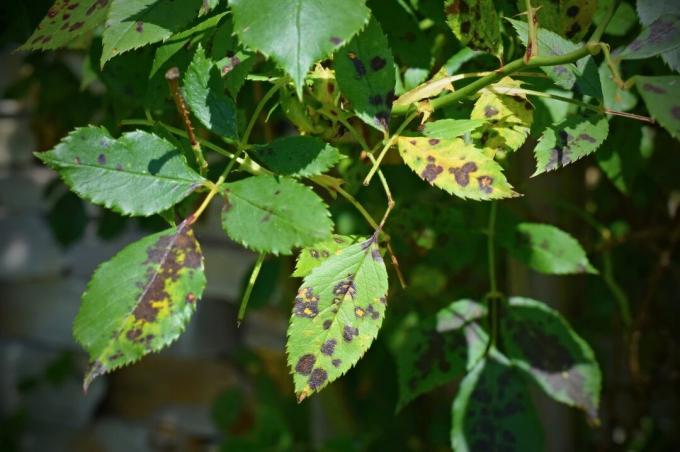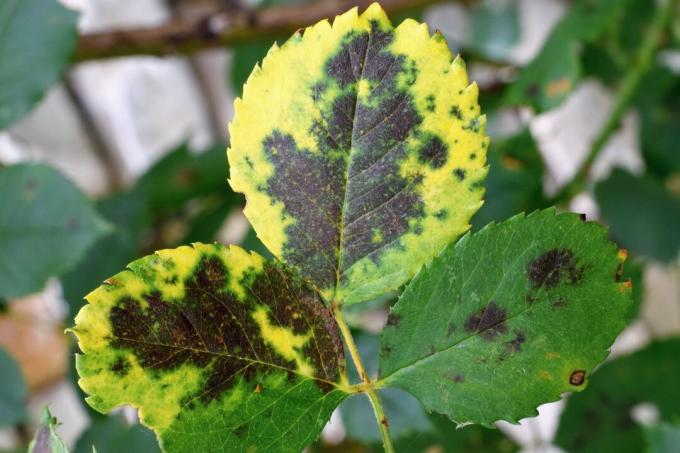Star soot: We show you how you can recognize black spot disease in roses, how you can prevent it and what means can be used to fight the fungus.

contents
- You can recognize star soot by these symptoms
- Soot pathogens
- Preventive measures
- This is how you can effectively combat blackened soot
You can recognize star soot by these symptoms
Sooty is a common fungal disease and only affects the rose (pink). The infestation usually occurs first on the leaves close to the ground and from there, in unfavorable cases, spreads to the entire plant. The first symptoms can appear as early as May. The disease can be recognized by small, star-shaped spots with a blurred edge. The spots are black-brown and can reach a size of 3 cm. In the later course of the disease, the leaves are weakened so much that the leaves turn yellow and fall off. If the summer is characterized by many wet and humid weather periods, the rose can lose all of its foliage.

Soot pathogens
Black spot disease (sometimes called black spot disease) is caused by a fungus called Diplocarpon rosae triggered. It overwinters in the form of spores in the soil and especially on old, infested leaves and shoots. But plants can also be infected by the wind. The fungus spreads particularly quickly in wet weather with temperatures above 15 ° C and high humidity.
Preventive measures
First of all, old infected leaves and parts of plants must be disposed of with the residual waste. The spores are not broken down in the compost and can infect your roses again from there. To prevent the fungal spores from gaining a foothold on the rose, drying the leaves quickly is extremely important. A sunny and airy location is very important for this. Splashing water should also be avoided when watering, and fertilization with a high concentration of nitrogen is also very unfavorable. Furthermore, many gardeners recommend regular spraying (once a week) with horsetail tea. The silicic acid it contains strengthens the cell walls of the leaves and the fungus hardly has any chance of triggering an infection.

This is how you can effectively combat blackened soot
Combating star soot is unfortunately often unavoidable. Because of the disease, the flowers stay out or appear only in small numbers and the frost sensitivity of the entire rose is also increased. In addition, the disease is likely to recur in the next year. To put an end to the infestation, we recommend Fungisan rose and vegetable mushroom free. Repeated use means that the soot starch does not stand a chance.
The following products have proven themselves in our garden:
- COMPO Duaxo roses mushroom-free: Fully systemic pesticide with depot effect; stops further spread; Protects roses, ornamental plants and herbs
- NEUDORFF Fungisan Rose and vegetable mushroom-free: Plant protection agent that is gentle on beneficial organisms and does not pose a risk to bees with very good long-term effects
- COMPO Duaxo Universal mushroom-free: Fully systemic fungicide spray; Reliably protects against new infestation and stops the spread
Unfortunately, diseases and pests often attack roses. Therefore we present you the most common ones Rose diseases, their symptoms and how you can combat them.


